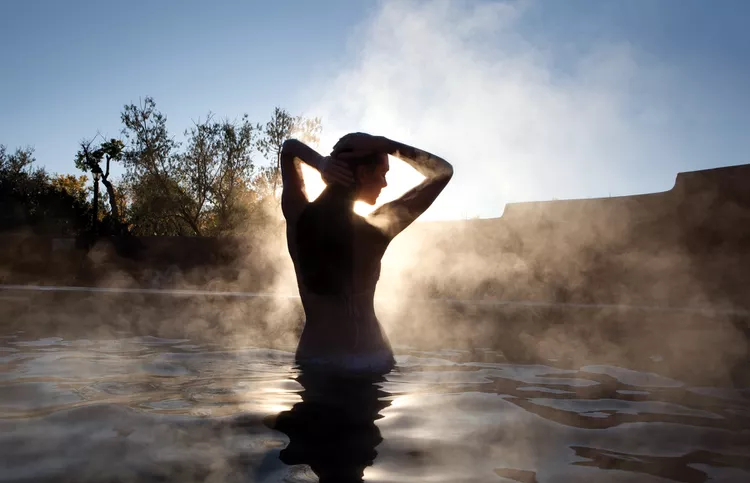1. Introduction
Mineral springs have been valued for their therapeutic benefits, offering relief from joint pain, arthritis, depression, and rheumatism. This ancient practice of soaking in hot springs, known for their naturally occurring minerals, likely originated with indigenous peoples.
2. What Mineral Springs Are Made Of
Mineral springs contain various naturally occurring minerals and trace elements such as:
- Calcium
- Magnesium
- Potassium
- Sodium
- Iron
- Manganese
- Sulfur
- Iodine
- Bromine
- Lithium
- Arsenic (in low quantities)
- Radon (in low quantities)
The water composition varies by spring, and many spas provide detailed chemical analyses. Depending on the mineral makeup, different springs are believed to alleviate specific ailments.
These springs may emerge at cooler temperatures, then be heated for bathing as seen in Saratoga Springs, New York. If there’s geothermal activity nearby, the mineral water is heated underground, resulting in hot springs. Some waters can be extremely hot and require cooling before bathing.
3. Where You Can Find Most Mineral Hot Springs
The United States boasts around 1,700 hot springs, predominantly found in the Western states, including Alaska and Hawaii. In contrast, the Eastern U.S. only has 34 thermal springs, with three classified as hot springs: Hot Springs, Arkansas; Hot Springs, North Carolina; and Hot Springs, Virginia, located in the Blue Ridge Mountain range.
Mineral springs spas vary significantly in luxury and amenities. Some historic bathhouses offer simple private rooms for soaking, while others feature communal outdoor pools. Conversely, some of the world’s most opulent hotels and resorts are situated near these mineral springs.
4. History of Mineral Springs
Numerous famous spa cities have developed around mineral springs, such as Baden-Baden in Germany, Spa in Belgium, and Bath in England. In the U.S., historic spa cities emerged during the 18th and 19th centuries, including Berkeley Springs, Virginia; Calistoga, California; and Hot Springs, Arkansas.
During the 19th century, both soaking in and drinking mineral waters were integral to spa culture. Wealthy patrons frequented spas for socializing, with sipping pavilions enhancing the experience. Due to a lack of effective medical treatments at the time, spas often made extravagant claims about their healing benefits.
By the 1940s, the appeal of hot and mineral springs waned as antibiotics emerged, leading many to dismiss them as outdated remedies. Nonetheless, soaking in hot mineral springs remains a comforting experience, particularly when combined with massages and other relaxation techniques, providing a soothing tonic for modern stress.





